
DATASHEET KXC-WA9
How an RFID wide area reader works
Before we get into how to attach a wide area RFID solution, it is useful to know how the system works in general. The reader (the antenna) emits energy/radio waves in a specific direction. When a passive transponder (IsoCard, Iso Combi Card, headlight or windshield transponder) receives this energy, a small chip in the transponder is charged. When enough energy has been collected, the transponder emits a signal. The entire process takes place in fractions of a second and repeats as long as the transponder receives energy from the antenna. The process is directional, meaning that the transponder and reader must be aligned. The better the reader and transponder are aligned, the better the performance (read range).
Flashlight and mirror
Imagine a flashlight with light shining on a mirror. The reader is the flashlight and the transponder is the mirror. In a wide-range RFID solution, the mirror must be oriented so that the light is reflected back to the flashlight.
When installing the wide range reader, please pay attention to how the energy is reflected back from the transponder. Are the devices aligned with each other? Where does the energy go? Is most of it thrown back toward the reader or up toward the sky?
When installing a wide-range RFID solution for vehicle detection, the angle between the transponder and reader plays a major role. Try to aim the reader directly at the point where most vehicles are likely to have the transponder, usually on the windshield or headlight lens.
A low-mounted reader may have difficulty reading windshield transponders. A reader mounted far above, on the other hand, may have difficulty with headlight transponders. Piggyback transponders work well with low-mounted readers that are mounted slightly higher than the approaching headlights. Windshield transponders require readers mounted high up.
Safety instructions
No modifications of any kind, other than those described in an appropriate manual, are permitted to Kentix GmbH products.
Certain levels of protection must be provided when installing Kentix equipment.
Observe the relevant regulations for installations in the respective environment.
Only operate the products within the defined temperature range.
The instructions should be passed on to the user by the person carrying out the installation.
Kentix accepts no liability for damage to the equipment or components resulting from incorrect installation. No liability is accepted for incorrectly programmed units.
Kentix shall not be liable in the event of malfunctions, damage to property or other damage.
Protect moisture, dirt and damage.
Only operate the products within the defined temperature range.
Installation and battery replacement may only be carried out by trained personnel in accordance with the instructions.
Do not charge, short circuit, open or heat batteries.
When inserting the batteries, pay attention to the correct polarity.
The devices must always be operated with the batteries intended for the product.
When changing batteries, always replace all batteries.
Dispose of old or used batteries properly.
Keep batteries out of the reach of children.
Mounting a reader on the side of a barrier or gate for a windshield transponder
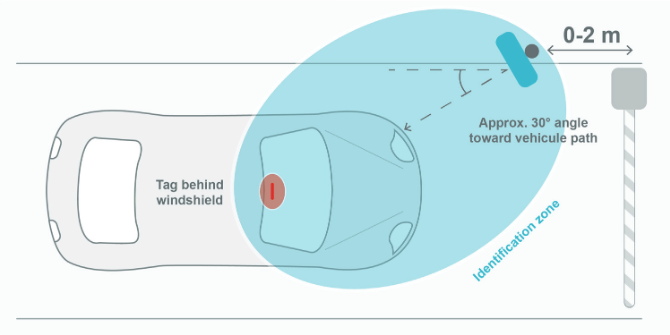
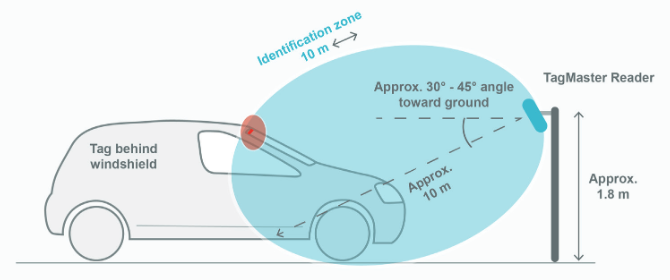
Reader arrangement
Distance from the barrier: Approx. 2 m in front of the barrier, on a post or similar near the road. The vehicle reaches the detection area earlier during the approach. Thus, the barrier will be opened a little earlier to allow smoother passage.
Height: approx. 1.8 m
Orientation: 30° – 45° towards the ground, 20° – 30° towards the vehicle.
Readers: XT Mini, XT-1, XT-5.
Transponder: ISO Card, ISO Combi Card, Windshield Tag (windshield transponder).
Mounting a reader on the side of a barrier or gate for a headlight transponder
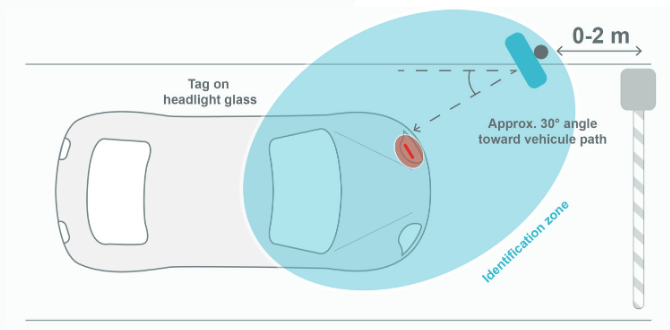
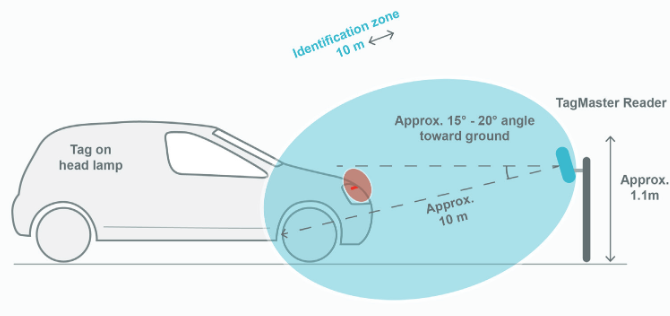
Reader arrangement
Distance from the barrier: Approx. 2 m in front of the barrier, on a post or similar near the road. The vehicle reaches the detection area earlier during the approach. Thus, the barrier will be opened a little earlier to allow smoother passage.
Height: about 1.0 – 1.2 m.
Orientation : 15º – 20º towards the ground, 30° towards the vehicle.
Readers: XT Mini, XT-1, XT-5.
Transponder: Headlight tag (headlight transponder), item no.: 227000.
Mounting a reader above a driveway or gateway
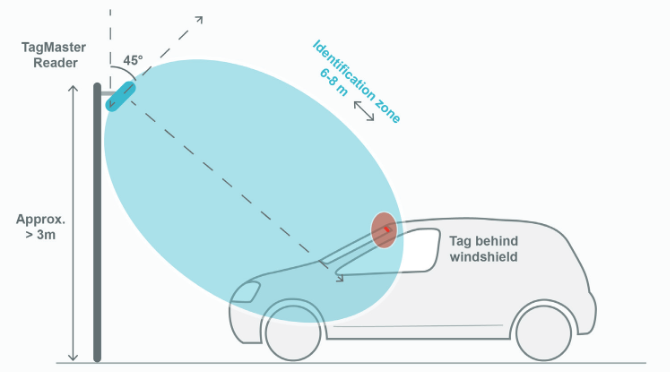
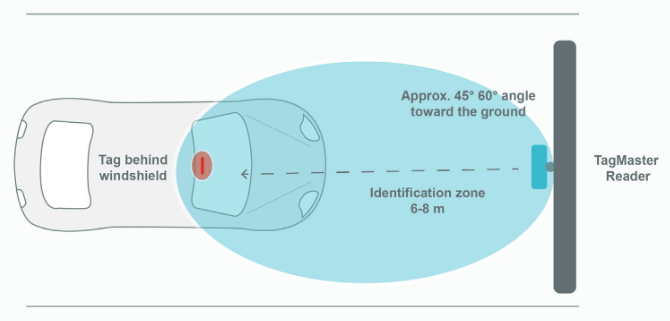
Reader arrangement
Distance between floor and reader: 2.5 – 3 m.
Position: Centered above the entrance or gate.
Angle: Align the reader with the floor. Angle: 45° – 60
Height: approx. > 3 m.
Readers: XT Mini, XT-1, XT-5.
Transponder: ISO Card, ISO Combi Card, Windshield Tag (windshield transponder).
Mounting readers on both sides of a gate or barrier
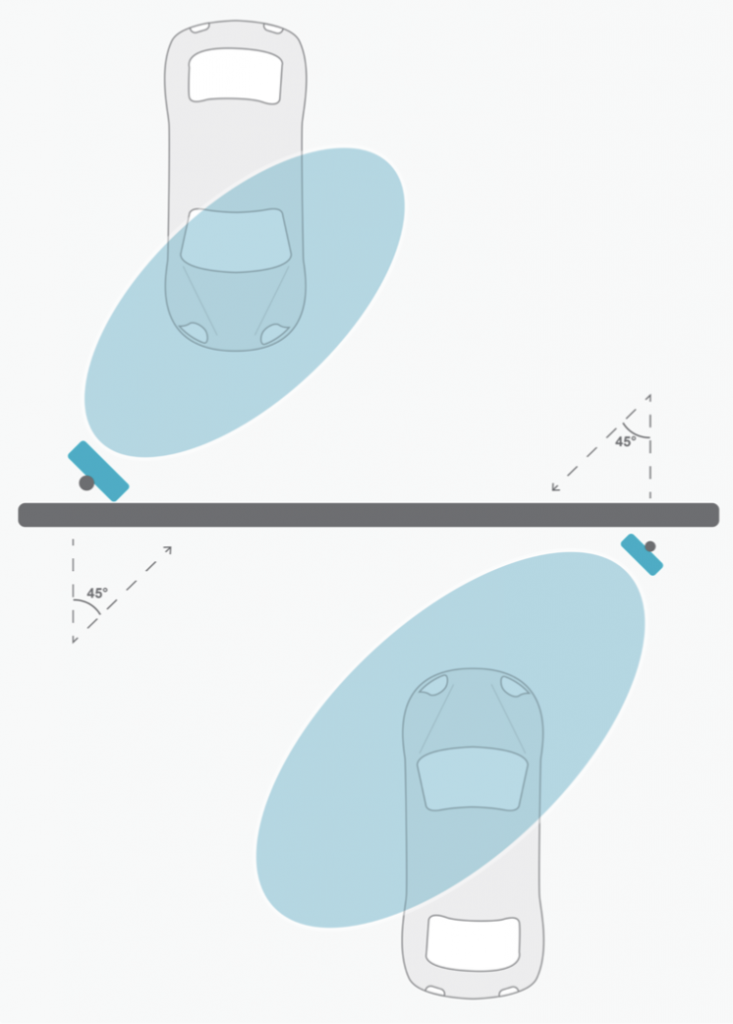
Reader arrangement
Position: Attach the reader to the right side of the gate (right-hand traffic).
Angle: 30° – 45° towards the vehicle.
Setup for centrally located readers and road barriers
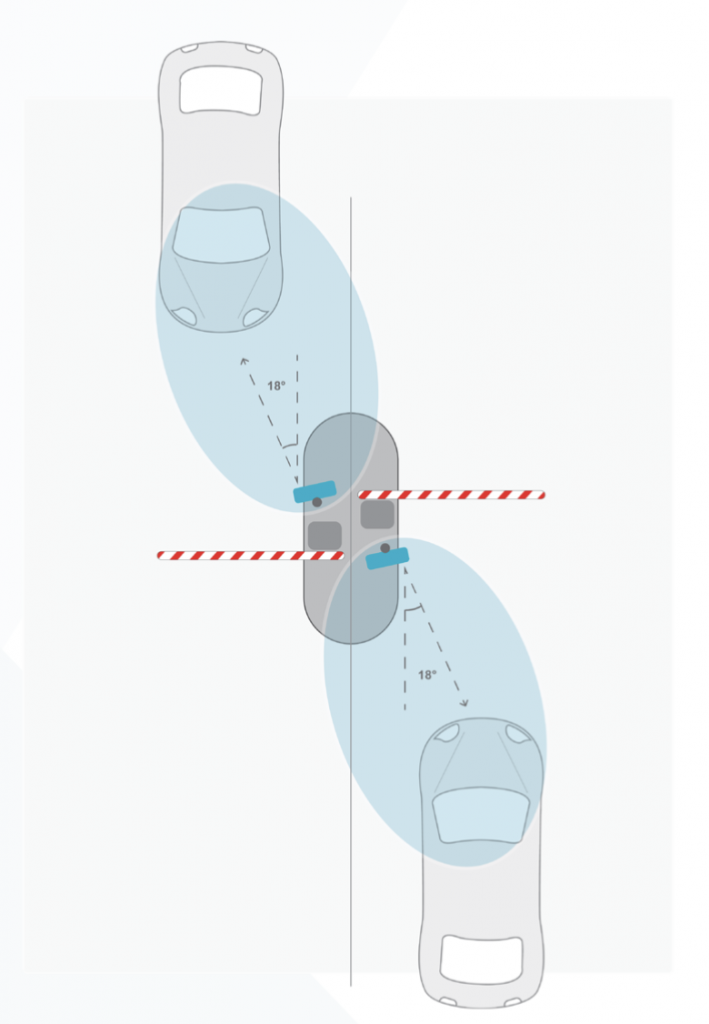
Reader arrangement
Position: Centered readers and road barriers.
Arrange a reader in each direction.
Angle: 15° – 20° towards the vehicle.